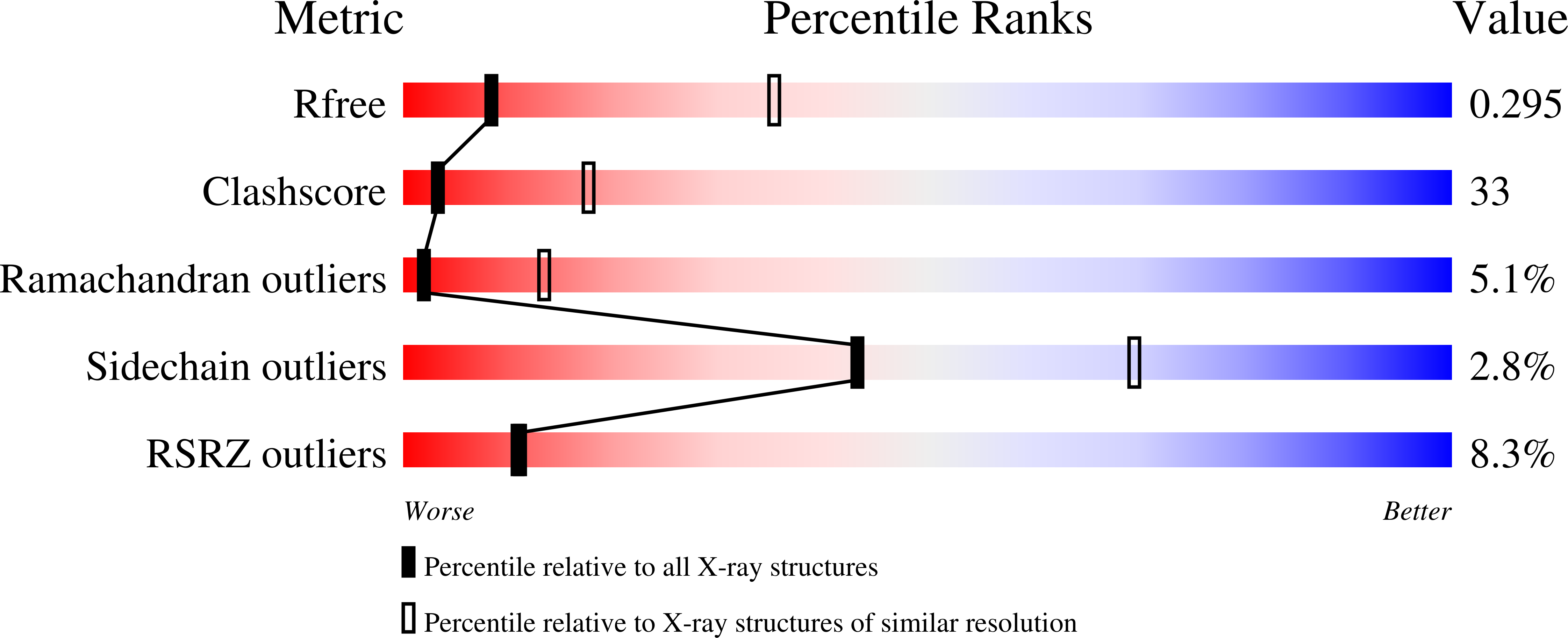CRYSTAL STRUCTURE AND MECHANISM OF A CALCIUM-GATED POTASSIUM CHANNEL
JIANG, Y., LEE, A., CHEN, J., CADENE, M., CHAIT, B.T., MACKINNON, R.(2002) Nature 417: 515-522
- PubMed: 12037559
- DOI: https://doi.org/10.1038/417515a
- Primary Citation of Related Structures:
1LNQ - PubMed Abstract:
Ion channels exhibit two essential biophysical properties; that is, selective ion conduction, and the ability to gate-open in response to an appropriate stimulus. Two general categories of ion channel gating are defined by the initiating stimulus: ligand binding (neurotransmitter- or second-messenger-gated channels) or membrane voltage (voltage-gated channels). Here we present the structural basis of ligand gating in a K(+) channel that opens in response to intracellular Ca(2+). We have cloned, expressed, analysed electrical properties, and determined the crystal structure of a K(+) channel (MthK) from Methanobacterium thermoautotrophicum in the Ca(2+)-bound, opened state. Eight RCK domains (regulators of K(+) conductance) form a gating ring at the intracellular membrane surface. The gating ring uses the free energy of Ca(2+) binding in a simple manner to perform mechanical work to open the pore.
Organizational Affiliation:
Howard Hughes Medical Institute, Laboratory of Molecular Neurobiology and Biophysics, Rockefeller University, 1230 York Avenue, New York, New York 10021, USA.

















